All about wheelchair ramps and how to buy the right one for your house
Buying a wheelchair ramp is essential for providing full accessibility to your house. However, finding the right access ramp can give you a bit of a headache, as there are several things to consider. Don’t worry, though, Sync Living has got your back. We will supply all of the relevant information to make your selection much easier.
Believe it or not, the process is not that complicated. It is like when you go to a tailor for a bespoke suit. You tell him what you are looking for, he takes all the required measures, and then he creates a perfect piece of clothing that matches your needs with your body structure and size.
Buying a wheelchair ramps work almost the same as getting your hand-made suit. The first thing to do is to provide your supplier with detailed information about you, your manual/powered wheelchair or mobility scooter, and your dwelling. This will allow him/her to have enough knowledge and data to tell you which access ramp is best for your specific case.
(Pssst… You can speak to our experts, who will advise what solution will suit your situation, your home, or your vehicle best. Call Sync Living’s friendly team on 028 9074 5333. We offer a free, no-obligation survey for mobility ramps in Northern Ireland!).
So, what are the key measurements to take and what are the most important things to bear in mind when buying a wheelchair ramp for your house?
Buying a wheelchair ramp for your house: considerations about the dwelling
1 Can you physically build a ramp?
Unfortunately, it is not always feasible to buy a wheelchair ramp. In fact, as the pictures below highlight, some house fronts do not meet the requirements to build a ramp in safety and without violating public property.

Besides the steep steps, the grass is not the right surface to provide support to this type of equipment. The ramp would literally end up beaching into the soft ground.

In this case, there are several technical issues that make it impossible to build a ramp. First, the total height and the depth of the steps would require an extremely long ramp. Then, as there is a landing between the first set of steps and the door, two ramps would be needed. In addition, the structure of the entrance doesn’t make it feasible to develop a ramp on the sides, and a front ramp would not be an option because of the presence of the sidewalk in front of the house.
Even though it is not always possible to use this equipment, in some cases you could still be able to install an outdoor stairlift or a platform to access your house.
2 How do you calculate the gradient of a ramp?
When buying a wheelchair ramp you need first thing to calculate the total height of the steps as it will determine the gradient of the ramp itself. The total height is measured from the ground to the highest point, which often includes the height of the internal steps or of the threshold when present.
As for the gradient, there is not a fixed standard. It is all about finding the right compromise between the user’s needs and the external environment of the house.
According to Enable Access, the following gradients are acceptable:
The 1:6 gradient is still acceptable with its 10˚ angle. With this type of gradient, the portable ramp would be rather steep, so it would be used only in some specific cases. Typically for short threshold ramps.

The 1:8 gradient has an 8 ˚ angle. It is still an acceptable gradient for a portable ramp especially when you need to find a compromise between the space available and the structure of the entrance.

The 1:12 gradient, with a 5 ˚ angle, or even steadier gradients up to 1:20 are usually required by occupational therapists to meet the needs of their patients.

3 What is the depth of the steps?
It is important to take into account the depth of the steps, as this might affect the overall length of the wheelchair ramp. Some steps can be shorter than the standard. On the contrary, others can be deeper and shallower.
4 Which kind of threshold does your house have?
According to your front house entrance, you might need to buy a specific type of wheelchair ramp.
The most common types of entry are usually:
- Steps leading to the doorway
- Internal steps
- Wood door threshold
- PVC door threshold
5 What is the width of the doorway?
The standard width of a doorway is now around 30 inches. However, older houses might have a narrower door. In this case, you would need to use a pair of shoulders to fit the ramp with the size of the doorway.
6 Is the space in front of your house a private or public property?
The space available in front of the threshold will determine whether you can buy a permanent/semi-permanent wheelchair ramp or a temporary ramp. If you own the land of your front yard or if you get the permission from your landlord, you can get an access ramp built. Otherwise, if you don’t get any permission or if your house entrance is located straight on public property, you would need a portable access ramp.
7 How much space is there in front of the house?
The space available in front of your house will affect the design of the ramp. Do you have only a little space available in front of your doorway? Then, you might have to consider a steeper gradient or use a platform to give the right angulation to the ramp.
8 What type of ground is present in front of your doorway?
To provide proper support to a wheelchair ramp and safety to the end user it is important to assess the stability of the surface where the ramp will be positioned. Concrete represents the ideal ground where to place a ramp as it’s firm, flat, and solid. The grass is too soft, and it could become soggy in case of rainfalls causing the ramp to sink down. Equally, uneven surfaces like gravel or cobblestone are not appropriate to have a ramp installed. In these cases, we recommend substituting them with paving slabs for a stronger and safer support.
Buying a wheelchair ramp for your house: considerations about the end user
1 Do you use a manual wheelchair, a powered wheelchair, or a mobility scooter?
The type of device in use is also important when buying a wheelchair ramp. In the case of a manual wheelchair, it might be better to opt for a ramp with a steadier gradient. Portable mobility scooters, instead, need enough ground clearance at the top of the ramp not to be stuck.
2 What is the total weight of the user, his/her device and the carer?
For independent users, it is important to be aware of the total weight of the person and his/her device, especially if they have a powered wheelchair or a mobility scooter, which are heavier than a wheelchair. In the case of users who need assistance to go up and down the ramp, the combined weight of the person, the device in use, and the carer must be considered.
3 What is your budget?
The budget will also play a role in the type of ramp chosen. In general, in terms of material used, concrete, and fibreglass are more expensive than aluminium. In addition, also the length and the size of the ramp will determine its final price.
4 How long is the end user supposed to use the access ramp?
Is it a permanent condition or will the user’s health condition improve? Is the user young or an elderly person? This factor will also contribute to the final choice when buying a wheelchair ramp.
5 Where are you going to store the ramp?
If you purchase a temporary ramp, you also need a place where to store it. Be aware that the longer the ramp will be the more storage space you will need. For example, if your steps have a total height of 1 ft and you purchase a ramp with a gradient of 1:6, you need to be sure you have a space of at least 6ft length where to store it.
Wrapping it up: final considerations about buying a wheelchair ramp
As you can see, when talking about access ramps, options are countless. Therefore, we recommend you always get in touch with an expert like Sync Living when buying a wheelchair ramp. As we are sure you wouldn’t want to spend resources on something that is not suitable for you and that quickly wears out. To avoid this, here are some simple and actionable recommendations:
- DON’T BUY A USED RAMP:
Imagine the situation. You might have thought you found the deal of your life. You saved some hundreds on your access ramp purchased online. It looked great in the pictures, but then it turned out there were some damages or structural issues that didn’t make it compatible with your needs. Why would you be wasting money and time on it? Wheelchair ramps are not made to be purchased second-hand as they need to fit specific requirements. - DON’T RUSH:
You might be in extreme need of buying a wheelchair ramp and you might want to find a quick fix to your problem. However, it is worth taking the right time to consult with an expert and find the product that matches with your needs and your budget. Don’t get the first thing you see online, or you will end up regretting it. - DON’T ASK YOUR MATE FOR ADVICE:
Wheelchair ramps are not something you can buy in a retail shop. They must be customised to meet specific requirements. Therefore, it is important you get in touch with competent people that can help you find the best option for you. You need a reliable and expert piece of advice in this case, not just a simple chit-chat with your friends and neighbours. It is like when you have high temperature, would you ask whoever for advice, or would you rather talk to your GP?
Your key takeaway about buying a wheelchair ramp
The moral of this blog post is that “One size doesn’t fit all” and that no generalisations are recommended. When talking about this type of product, you should always be buying a wheelchair ramp that is customised to meet your specific requirements.
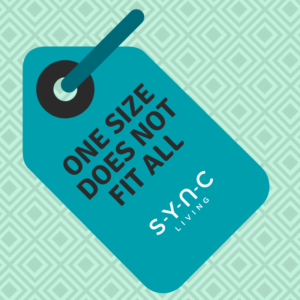
If you live in Belfast or Northern Ireland and you are considering buying a wheelchair ramp to access your home, get in touch with us. We will work together to find out the best solution for you.
In the meantime, just to get a flavour of the main types of mobility ramps we sell, here is our blog post about the best types of ramps for inclusive access!
Alternatively, have a look at a sneak peek of our best-selling ramps from Enable Access:
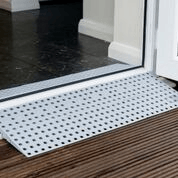
1) Build-a-slope threshold ramp
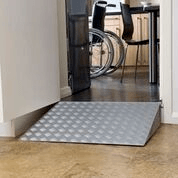
2) Doorline Wedge threshold ramp
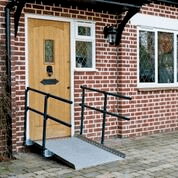
3) Welcome ramp
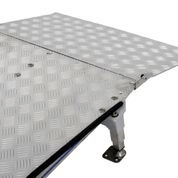
4) Permaramp entry flap

5) Suitcase ramp
